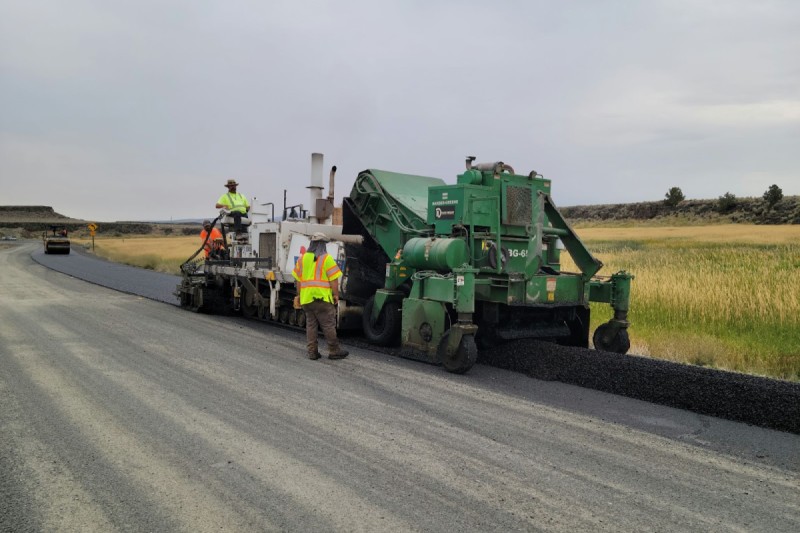Tech
Mark Buckland Highlights The Environmental Benefits of Asphalt Recycling and Sustainable Paving Methods

Sustainable road construction is becoming a priority as urban expansion accelerates and environmental concerns grow. Traditional asphalt production consumes vast amounts of energy and raw materials, leading to excessive waste and carbon emissions, as Mark Buckland describes. Recycling asphalt presents a viable alternative by reducing reliance on new resources while maintaining the durability and quality of road surfaces.
This process not only conserves natural materials but also reduces landfill impact and energy consumption. Many cities and construction firms are now adopting advanced recycling techniques, ensuring that infrastructure development aligns with sustainability goals. With ongoing innovations in paving materials and methods, asphalt recycling continues to grow, offering a cost-effective and environmentally friendly approach to modern road construction.
The Role of Asphalt Recycling in Sustainable Infrastructure
Sustainable infrastructure is paramount as urbanization and transportation demands continue to grow. Traditional road construction relies on raw materials, leading to resource depletion and environmental degradation. Asphalt recycling offers a practical solution by reusing existing materials, reducing the need for new extraction while minimizing construction waste.
Many cities have adopted asphalt recycling to extend the lifespan of roads without compromising quality. Reclaimed asphalt pavement (RAP) is incorporated into new projects, lowering production costs and conserving natural resources. Additionally, the ability to repurpose old asphalt reduces reliance on landfills, further contributing to sustainable development. By repurposing old asphalt, communities can reduce landfill waste and limit pollution caused by excessive material disposal.
How Asphalt Recycling Works
Recycling asphalt involves breaking down old pavement materials and incorporating them into new mixtures. Depending on the project, different methods are used, such as hot mix, cold mix, and full-depth reclamation. Hot mix asphalt, one of the most commonly used techniques, heats reclaimed materials before blending them with fresh asphalt, ensuring a durable and high-quality result. Cold mix, on the other hand, allows for repaving without excessive energy consumption, making it ideal for roads in lower-traffic areas.
The efficiency of asphalt recycling lies in its ability to reduce the need for new raw materials. Many construction companies now integrate reclaimed asphalt pavement (RAP) into their projects, cutting costs while achieving the same performance as traditional paving methods. In addition to cost savings, using recycled asphalt decreases reliance on energy-intensive production processes, leading to lower emissions and less environmental strain. Some studies indicate that roads built with recycled asphalt require fewer repairs over time, further improving long-term efficiency.
Reducing Waste, and Natural Resource Consumption
Discarded asphalt can take up valuable landfill space, contributing to environmental concerns and unnecessary waste accumulation. Recycling eliminates this issue by repurposing old pavement instead of sending it to disposal sites. Studies have shown that millions of tons of asphalt are reclaimed annually, making it one of the most recycled materials in the construction industry. This widespread adoption helps reduce landfill overflow and supports broader sustainability efforts.
Beyond waste reduction, asphalt recycling plays a major role in conserving finite natural resources. Traditional asphalt production requires large quantities of aggregates and bitumen, both of which must be extracted from the earth. The long-term benefits of this practice extend beyond conservation, as it also helps curb the environmental damage associated with raw material extraction.
Lowering Greenhouse Gas Emissions and Energy Use
Recycling asphalt is a key strategy in reducing the carbon footprint of road construction. Traditional asphalt production involves high-temperature processing and extensive transportation, which contribute to greenhouse gas emissions. By reclaiming and reusing existing materials, energy consumption declines, leading to fewer emissions and a more sustainable paving process. Warm-mix asphalt technology further enhances this efficiency by allowing asphalt to be produced at lower temperatures, reducing fuel use and air pollution.
In many regions, transportation-related emissions are a major environmental concern. Using recycled asphalt minimizes the need for new raw materials, cutting down on the energy-intensive extraction and refinement of aggregates and bitumen. This shift toward sustainable practices helps municipalities and construction firms lower their environmental impact while maintaining high-quality roadways. Furthermore, advancements in asphalt recycling ensure a steady supply of reused materials, reducing dependency on fossil-fuel-based production methods.
Durability, Performance, and Economic Benefits
One of the biggest misconceptions about recycled asphalt is that it compromises durability, but advancements in technology have proven otherwise. Modern recycling techniques ensure that repurposed asphalt meets or even exceeds the performance of traditional mixtures. Roads constructed with recycled materials often display the same longevity and resistance to wear, making them a reliable choice for urban and rural projects. In high-traffic areas, engineers are utilizing enhanced recycled asphalt mixtures to improve road resilience and extend service life.
Beyond durability, the economic advantages of asphalt recycling are substantial. Municipalities and contractors save money by reducing material costs and minimizing the need for frequent repairs. Since recycled asphalt requires less processing and transportation, overall project expenses decrease. These cost savings extend to taxpayers as well, allowing for more efficient use of public infrastructure budgets. Lower maintenance costs mean that funds can be redirected to other essential infrastructure projects, benefiting the broader community.
Disclaimer: This is a sponsored piece of content. Time Bulletin journalists or editorial staff were not involved in the production or writing of this content.
-

 Business1 week ago
Business1 week agoRandy NG: Inside the Process of Managing End-to-End International Trade Operations
-

 Business2 weeks ago
Business2 weeks agoArdavon Moayer Explains How Discipline and Teamwork Translate to Sales Wins
-

 Cryptocurrency2 weeks ago
Cryptocurrency2 weeks agoRami Beracha Asks, Can Israel Become A Global Leader In Blockchain Innovation?
-

 Education3 weeks ago
Education3 weeks agoForged in Fire: Nicholas Lawless Unveils Lawless Leadership – The Model Built for a World That Traditional Leadership Can’t Survive
-

 Tech4 weeks ago
Tech4 weeks agoAdsPower Promo Code for 50% Off – Ultimate Guide to AdsPower Benefits (Referral Code Included)
-

 Tech1 week ago
Tech1 week agoFrontier Galvanizing: The Critical Role Of Galvanizing In Renewable Energy And Utility Projects
-

 Business3 weeks ago
Business3 weeks agoOPO Group LTD Strengthens Its Global Footprint With Expanding Offices and a Modernized Trading Ecosystem
-

 Business4 weeks ago
Business4 weeks agoThe overlooked costs of working from home










